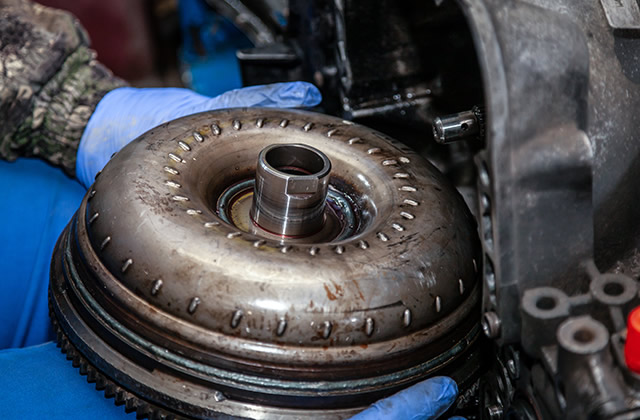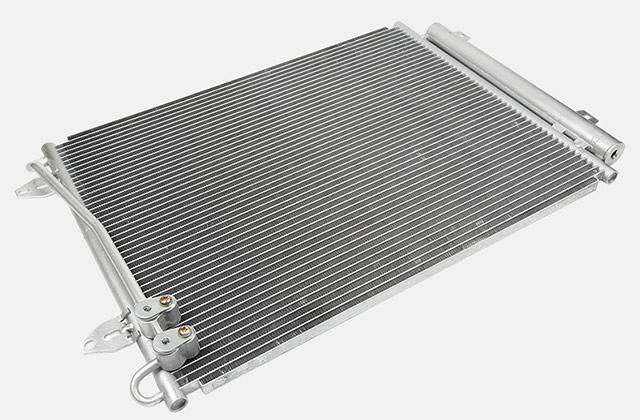The working principle and function of the expansion valve
Throttling and decompressing the high-pressure liquid refrigerant from the dryer, regulating and controlling the amount of liquid refrigerant entering the evaporator. Adapt it to changes in refrigeration load and prevent liquid shock in the compressor. After condensing the gas, the high-temperature and high-pressure refrigerant will decompress and cool down when passing through the expansion valve, thereby turning into a low-pressure and low-temperature liquid refrigerant, thereby creating conditions for the evaporation and refrigeration of the refrigerant in the evaporator.
Composition of expansion valve
Simply put, the expansion valve consists of three major parts: the valve body, the temperature sensing bulb, and the balance tube.

1. Temperature sensing bag
The temperature sensing bag is filled with refrigerant that is in a saturated state of gas-liquid balance. This part of the refrigerant is not connected with the refrigerant in the system. It is usually tied to the evaporator outlet pipe and is in close contact with the pipe to sense the superheated steam temperature at the evaporator outlet. Since the refrigerant inside it is saturated, it transfers the saturated pressure at the temperature to the valve body based on the temperature.
2. Balance tube
One end of the balance tube is connected to the evaporator outlet slightly away from the temperature sensing bulb, and is directly connected to the valve body through a capillary tube. Its function is to transmit the actual pressure at the evaporator outlet to the valve body. There are two diaphragms in the valve body. The diaphragms move upward under pressure to reduce the refrigerant flow through the expansion valve and seek balance in dynamics.
Characteristics of expansion valve
1. The expansion valve adopts dual-flow balanced orifice with advanced structure.
2. The expansion valve uses a dual-flow thermal expansion valve, which saves the number of expansion valves, check valves and solenoid valves in the refrigeration system.
3. The two-way balanced flow port of the expansion valve allows the static superheat to change with changes in condensation pressure or pressure drop across the valve port.
4. The expansion valve has stable superheat, making the system run stably.
5. The expansion valve is suitable for various work needs such as refrigeration and air conditioning.
6. Expansion valve evaporation temperature range: -40℃ to +10℃.
7. The expansion valve is suitable for R12 (Freon), R22 (difluorochloromethane), R134a and other media.
Adjustment method of thermal expansion valve
1. Stop the machine
Insert the probe of the digital thermometer into the evaporator return port (corresponding to the position of the temperature sensing package). Connect the pressure gauge to the tee on the compressor low pressure valve.
2. Turn on the compressor
Let the compressorRun for more than 15 minutes to enter a stable operating state, so that the pressure indication and temperature display reach stable values.
3. Adjustment
When adjusting the flow rate, the flow rate must be adjusted during normal operation of the refrigeration system, and it must be operated slowly and adjusted gradually. The judgment basis for adjusting the liquid supply flow rate is as follows:
(1) If the expansion valve body is completely frosted, it indicates that the flow rate is too small and should be increased;
(2) If the expansion valve body is completely frosted, the flow rate should be increased; When the frost shape does not change, the expansion valve throttle hole may be partially blocked and should be cleaned;
(3) If only the outlet side of the expansion valve body is frosted, it indicates that the flow rate is too large and should be reduced;
(4) If the outlet side and lower part of the expansion valve body are frosted obliquely at 45°C, there should be no frost on the inlet side, indicating that the adjustment is accurate and appropriate;
(5) If the expansion valve If only the inlet side of the valve body is frosted, it indicates that the filter screen at the inlet of the valve body is blocked and should be cleaned;
(6) If the expansion valve body is completely frost-free, it indicates that there is no flow, and the refrigerant may be leaking or the pipe may be completely leaked. The stop valve in the road is not open or the capillary tube of the expansion valve temperature probe is leaking or the expansion valve throttle hole is blocked or the filter screen at the inlet of the valve body is partially blocked and should be cleaned.
Under normal circumstances, the expansion valve is very quiet when working. If it makes a clear “whistle” sound, it means there is insufficient refrigerant in the system.
4. Temperature measurement
Use a thermometer to measure the difference between the temperature of the return pipe and the evaporation temperature (i.e. the actual superheat) and the standard superheat (between 5-8°C) (time) check to determine whether the adjustment size is appropriate. Using the suction pressure of the compressor as the saturation pressure in the evaporator, look up the table to obtain the approximate evaporation temperature. Use a thermometer to measure the temperature of the return air pipe and compare it with the evaporation temperature to see if it is within the normal range of 5-8°C. The suction pressure value and return pipe temperature must be read at the same time, otherwise the calculated actual superheat will be inaccurate.
During adjustment, do not make rapid adjustments with big ups and downs, which will make the refrigeration system run unstable and make it difficult to grasp the effect of adjustment. The scattered gear type uses a small gear to drive a large gear, and the number of adjustment turns is relatively large, generally 2-4 turns; the pressure rod type has a relatively small number of adjustable turns, 1/4 turn each time; Adjust 1/2, 1/3, 1/4 turn.
Adjusting the expansion valve must be done carefully and patiently, and adjusting the pressure must take a time process. Each time the expansion valve is adjusted, it usually takes 15-30 minutes to stabilize the adjustment pressure of the expansion valve at the suction pressure gauge. In addition to observing the changes in the low pressure value, it is also necessary to observe the frost formation on the expansion valve body, evaporator coil and compressor suction pipe to determine whether the adjustment is appropriate.
What are the symptoms of a clogged expansion valve?
If the expansion valve is clogged, the air conditioning system will have poor cooling effect, the expansion valve will freeze, and the compressor will make noise. , cooling abnormalities and other phenomena. The expansion valve plays a throttling role in the air conditioning system. When the system is working, by controlling the opening of the expansion valve, the refrigerant flow and system pressure are adjusted to make the system work normally..
A clogged expansion valve will cause the air conditioning system to have a very small refrigerant flow rate even if the expansion valve is opened to the maximum, and the pressure difference between the front and rear valves will be too large.
If the website content violates your rights, please contact us to delete it。








